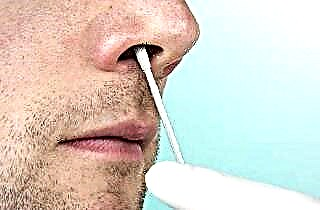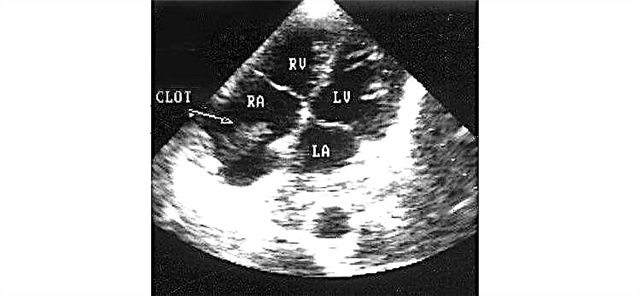Today, diseases caused by staphylococcal infection are diagnosed based on the results of a smear test for a pathogenic culture. Also, an important role in diagnostics is played by enzyme immunoassay. If staphylococci are detected, it is imperative to do another laboratory analysis. With its help, it will be necessary to determine the sensitivity of the considered opportunistic microflora to various antibiotics.
How to treat staphylococcus aureus in the nose and what drugs are the most effective to combat the ailments that this infection causes? Treatment of staphylococcus in the nose requires drawing up an individual therapy regimen for each patient who seeks help. It must take into account the specific type of pathogen, the level of its sensitivity to antibiotics and how widely the pathological process has gone.
Infection symptoms
 In most cases, a person does not even suspect that he, it turns out, is a carrier of a staphylococcal infection. Patients claim that it was possible to detect this harmful microorganism only after they underwent special examinations. At the same time, in principle, one can guess about the presence of staphylococcus in the nose. This can be suspected by:
In most cases, a person does not even suspect that he, it turns out, is a carrier of a staphylococcal infection. Patients claim that it was possible to detect this harmful microorganism only after they underwent special examinations. At the same time, in principle, one can guess about the presence of staphylococcus in the nose. This can be suspected by:
- persistent runny nose;
- increased body temperature for no reason;
- symptoms characteristic of intoxication.
It is not at all necessary that all of the listed symptoms will appear. Even one runny nose is enough if it has become chronic. Often the disease does not show itself at all. However, this does not mean that the person is completely healthy.
Treatment should be started only when all the necessary examinations have been carried out. But if Staphylococcus aureus is found (its most aggressive variety), you will have to be treated without fail.
Traditionally, there are 3 degrees of staphylococcus. Each of them has its own level of activity and reproduction. Accordingly, the treatment will be different. So, staphylococcus in the nose happens:
- certainly pathogenic (destroys blood cells);
- conditionally pathogenic (provokes a sluggish inflammatory process);
- saprophyte (almost does not affect health).
Treatment features
 It is necessary to treat staphylococcus only when the inflammatory process begins to develop. Being present in the body of a person with strong immunity in small quantities, this microorganism will not harm it. He will just live on a mucous membrane. However, you need to be on the lookout with him. Yet it is a conditionally pathogenic bacterium. This means that it is safe for humans for the time being. Even a minimal failure of immunity can give a green light to the active reproduction of staphylococcus. Therefore, doctors strongly advise not to delay treatment if a large number of staphylococci are found in the nose.
It is necessary to treat staphylococcus only when the inflammatory process begins to develop. Being present in the body of a person with strong immunity in small quantities, this microorganism will not harm it. He will just live on a mucous membrane. However, you need to be on the lookout with him. Yet it is a conditionally pathogenic bacterium. This means that it is safe for humans for the time being. Even a minimal failure of immunity can give a green light to the active reproduction of staphylococcus. Therefore, doctors strongly advise not to delay treatment if a large number of staphylococci are found in the nose.
Today, in the process of treating a staphylococcus that has settled in the nose, doctors are faced with a serious problem. It lies in the resistance (resistance) of this microorganism to most of the existing drugs. Since the time when the world learned about penicillin, Staphylococcus aureus has managed to mutate significantly. Therefore, it is quite logical that many of its varieties are resistant to antibiotics of this group. I had to make changes to penicillin. Thus, a new drug appeared - mecillin. But Staphylococcus aureus reacted with the appearance of a species resistant to it.
So, before prescribing this or that antibiotic, the doctor makes a special analysis and finds out how sensitive the harmful microorganism is to it. This is necessary in order to successfully cure staphylococcal infection.
Staphylococcus aureus is considered the most aggressive species. Penicillins, of course, do not take him. It is dangerous in that it is capable of provoking osteomyelitis, pneumonia and staphylococcal sepsis.
If staphylococcal infection has become severe, an integrated approach is required to the patient. He is individually prescribed the most effective antibiotics that eliminate pathogenic microorganisms. In addition, immunomodulatory medications and nasal drops will be prescribed. Remember that it is only necessary to treat such an infection under medical supervision. After all, the effectiveness of treatment directly depends on the correct selection of drugs. If you start to fight the disease on your own, it can be at least useless and at most dangerous for your health. You will lose time, and harmful bacteria will just take advantage of it for even more active development.
Antibiotic therapy
 If the nasal mucosa is infected with staphylococcus, you can fight it with two local antibiotics - Fusafungin drops and Mupirocin ointment:
If the nasal mucosa is infected with staphylococcus, you can fight it with two local antibiotics - Fusafungin drops and Mupirocin ointment:
- Fusafungin (Bioparox) is also available in aerosol form. The small size of the aerosol droplets allows the active substance to get into even hard-to-reach paranasal sinuses without any problems. The advantage of this drug is the presence of anti-inflammatory action, in addition to the powerful antibacterial.
- "Mupirocin" ("Bactroban") is a nasal ointment that can be successfully used even against methicillin-resistant staphylococcus. It is necessary to smear the vestibule of the nose. This should be done 2-3 times a day. The course of treatment is 7 days.
To deal a devastating blow to the bacteria and the disease that they provoked, the doctor prescribes an antibiotic by injection or in the form of tablets. The highest efficiency is typical for:
- Unazine;
- "Amoxiclav";
- Oxacillin;
- Ofloxacin;
- Ceftriaxone.
To completely get rid of pathogenic microflora, a long course of antibiotics will be required. Only the attending physician can choose the dosage and determine the duration of the course.
We process the nose
To slow down the process of reproduction of microorganisms that have settled in the nose, it must be properly handled. You need to do this using:
- Chlorophyllipt. One of the most effective remedies against staphylococcus aureus. In addition, it accelerates the regeneration of the affected nasal mucosa. Chlorophyllipt oil is the most commonly used oil. But as an alternative, it is permissible to make a solution from tablets. In oil or in a solution, you need to moisten the pieces of cotton wool and lay them one at a time in each nostril. For a child, it is allowed to dilute chlorophyllipt oil with any vegetable in a 1: 1 ratio.
 Zelenki. Perfectly safe for babies of any age. But it is destructive for staphylococcus. You should carefully treat the affected skin with it - but only on the outside. It is impossible to apply brilliant green directly to the mucous membrane - you can get burned.
Zelenki. Perfectly safe for babies of any age. But it is destructive for staphylococcus. You should carefully treat the affected skin with it - but only on the outside. It is impossible to apply brilliant green directly to the mucous membrane - you can get burned.- Staphylococcal bacteriophage. A drug with proven efficacy. This medication is available in liquid form. The liquid contains, as the name implies, bacteriophages. They are able to eliminate Staphylococcus aureus, even one that is resistant to antibiotics. This drug can be taken in combination with antibiotics. However, it is still desirable to postpone taking antibiotics until the end of the course of Staphylococcal bacteriophage. The advantage of this drug is the complete absence of any side effects and contraindications. In addition, it can be taken internally or applied externally - in the form of cotton applications placed in the nostrils. The duration of the course of treatment is about 7-10 days.
- Hydrogen peroxide (1% -3%).This remedy fights both bacteria and ulcers formed. Please note that it is strictly forbidden to apply the concentrate to the nasal mucosa. The correct concentration of hydrogen peroxide is 0.25%. To achieve this, you need to dilute 3% peroxide with clean water in a ratio of 1:11. The nasal treatment can be done with a jet or with a cotton swab soaked in peroxide.
Folk remedies
You can strengthen your position in the fight against staphylococcal infection with folk remedies prepared according to "grandmother's" recipes. They are comparatively safe, affordable and very convenient. This is important if you are going to be treated at home.
Products enriched with vitamin C have a very good effect on the immune system, strengthening it. Leaders are considered to be rosehip infusions, compote and tea made from black currant berries and leaves. It will be extremely beneficial for the immune system if you saturate your diet with broccoli cabbage, white cabbage (pickled), fresh apricots, Antonovka apples, cranberries and citruses.
 There are various ways to treat staphylococcal infections at home. The prepared potions can be taken internally, and also used for lotions and healing inhalations.
There are various ways to treat staphylococcal infections at home. The prepared potions can be taken internally, and also used for lotions and healing inhalations.
An infusion of celery and comfrey with the addition of juice from parsley root will help eliminate the inflammatory process and remove pus from the nose. It should be taken internally. Echinacea tincture can be used to strengthen the weakened immune system.
For nasal instillation, you can use a decoction prepared from burdock root (or burdock). And for rinsing the nose, it is best to use chamomile, as well as decoctions of calendula and sage.
If the disease is difficult and the nose is clogged with pus, and taking antibiotics does not give the desired results, use a mummy. Dilute this product in clean water at a ratio of 1:20. The finished drug must be taken twice a day, 50 ml before meals. One time is enough for a child. The duration of the course of treatment is 2 months.
Preventive measures
Of course, any disease is much easier to prevent than to cure. The same rule works in the case of staphylococcus.
The most effective preventive measure is to regularly strengthen your own health and immunity. In addition, it is imperative to adhere to an adequate rest and sleep regimen, it is advisable to engage in any kind of sports, spend enough time in the fresh air, follow the rules of a healthy diet and treat infectious diseases in time. It should be noted that it is also very important to maintain personal hygiene and cleanliness in the home.
Staphylococcal infections often affect the weakest. Pregnant women, babies under one year old, the elderly and those who often catch colds are more susceptible to it than others. They need enhanced prevention:
- as soon as the slightest hint of a runny nose appears, immediately rinse the nose (it is recommended to use a solution of sodium chloride);
- mop the floor and wipe the dust in the rooms as often as possible;
- airing rooms should become a daily tradition;
- diseases of the oral cavity and upper respiratory tract should be treated immediately after the first symptoms appear;
- before starting to feed the baby, be sure to wash both hands and chest;
- do not forget to undergo an annual (who needs - more often) examination by your doctor and other specialists.
And finally
 When one of the family members suddenly has staphylococcus, all other household members will have to be tested. If the result is positive, you will need to be treated collectively. 3 months after the end of the course of treatment, it is necessary to re-analyze. Then it is recommended to take smears twice a year (preferably in spring and autumn).
When one of the family members suddenly has staphylococcus, all other household members will have to be tested. If the result is positive, you will need to be treated collectively. 3 months after the end of the course of treatment, it is necessary to re-analyze. Then it is recommended to take smears twice a year (preferably in spring and autumn).
In addition, we emphasize that when infected with Staphylococcus aureus, treatment will be fraught with significant difficulties and will stretch indefinitely. After all, it is this type of pathogenic microorganism, as already mentioned, that very quickly develops resistance to antibiotics, which are prescribed by the doctor.
Therefore, in the course of treatment, there is a need for constant smears to the level of sensitivity of staphylococcus to antibacterial drugs.
In general, diseases caused by staphylococcus are successfully treated today. The main thing is not to delay the visit to the doctor and not to engage in uncontrolled self-medication.

 Zelenki. Perfectly safe for babies of any age. But it is destructive for staphylococcus. You should carefully treat the affected skin with it - but only on the outside. It is impossible to apply brilliant green directly to the mucous membrane - you can get burned.
Zelenki. Perfectly safe for babies of any age. But it is destructive for staphylococcus. You should carefully treat the affected skin with it - but only on the outside. It is impossible to apply brilliant green directly to the mucous membrane - you can get burned.

